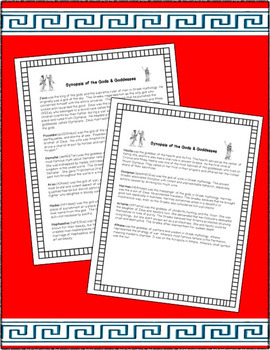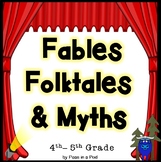Last Week of School Reading Activities Social Studies Projects End the Year Fun
- PDF
What educators are saying
Also included in
- This bundle is full of 4th & 5th grade standards aligned resources perfect for fun summer school or summer camp activities. Students are asked to identify morals, recount stories by exploring their elements, understand characters, distinguish points of view, and work with new vocabulary. There aPrice $17.50Original Price $23.37Save $5.87
Description
Grab these Greek mythology readers theater scripts for your class! Practicing reader’s theater scripts is a fun way to build reading fluency! When the scripts incorporate gods and goddesses from ancient Greece and play out famous Greek myths this practice becomes interdisciplinary combining reading fluency, vocabulary, public speaking, and social studies. FANTASTIC end of the year project or addition to any reading curriculum!!
Included in this resource:
~ FOUR Greek Myths Reader’s Theater Scripts
1 Daedalus & Icarus (5 Characters)
2 Persephone ~ A Story of the Seasons (8 Characters)
3 King Midas (8 Characters)
4 A Love Story~ Cupid (Eros) & Psyche (8 Characters)
~ Synopsis of the Gods & Goddesses
Teaching Tips:
• Begin by familiarizing the class with the characters & unknown vocabulary.
• To build fluency speed, have students pre-read their scripts silently several times. (To build fluency with improved expression, begin to practice out loud.)
• I like to divide my class into 4 groups and give each group a play to practice. Finally, they then perform it for the class.
• Reader’s theater can be made into a costumed, staged performance or kept simple with students sitting on chairs in front of the class. Do what works best for your schedule!
Common Core
- RL.3.2 Recount stories, including fables, folktales, and myths from diverse cultures; determine the central message, lesson, or moral and explain how it is conveyed through key details in the text.
- RL.4.2 Determine a theme of a story, drama, or poem from details in the text; summarize the text.
- RL.5.2 Determine a theme of a story, drama, or poem from details in the text, including how characters in a story or drama respond to challenges or how the speaker in a poem reflects upon a topic; summarize the text.
- RL.6.2 Determine a theme or central idea of a text and how it is conveyed through particular details; provide a summary of the text distinct from personal opinions or judgments.
- RI.7.2 Determine two or more central ideas in a text and analyze their development over the course of the text; provide an objective summary of the text.
- CC.6.RI.2 - Determine a central idea of a text and how it is conveyed through particular details; provide a summary of the text distinct from personal opinions or judgments.
> You might also like <
Main Idea and Supporting Details Task Cards
Valentines Day Writing Complete Sentences Worksheets
Text Features Activities ~ Christmas Reading Comprehension ~ Polar Animals
Text Structure Activities ~ Christmas Reading Comprehension ~ Polar Regions
Back-to-School Activities! for Intermediate Grades
Writing ~ Response to Literature!
Reading Comprehension Book Profile
Click Here for an Awesome Reading Fluency Graph
Click here for Handy Dandy Student Reference Divisibility Rules
⭐⭐⭐⭐⭐ WE STRIVE FOR 5 STARS! ⭐⭐⭐⭐⭐
NEED HELP? Before leaving feedback:
- Visit the FAQs section
- submit a help ticket
- ask a question on the Q& A tab
✨ Customer Tips: ✨
- Stay updated on discounts, freebies, and product launches by following our store.
- One purchase grants access for one teacher or homeschool parent; for sharing, kindly purchase an additional license.
- Only to be printed or placed on password-protected websites like Google Classroom™ or SeeSaw and not made available on public platforms or district servers.
- Leave feedback on your purchases to earn TPT credits for future savings! Your insights help us tailor our resources to better serve your classroom needs.
✏️ Connect with Peas in a Pod Lessons! ✏️
Don't miss upcoming FREEBIES! Follow Peas in a Pod by clicking on the green star on any of my pages. You'll receive in app notifications when we post new resources!
We appreciate all that you do for your students!
Melissa (Peas in a Pod)
Copyright: Copying any part of this product and placing it on the internet in any form (even personal/class website) is forbidden and is a violation of the Digital Millennium Copyright Act (DMCA). In purchasing this resource, you are agreeing that the contents are the property of Peas in a Pod and licensed to you only for classroom/personal use as a single user. I retain the copyright, and reserve all rights to this product. Thank you!






